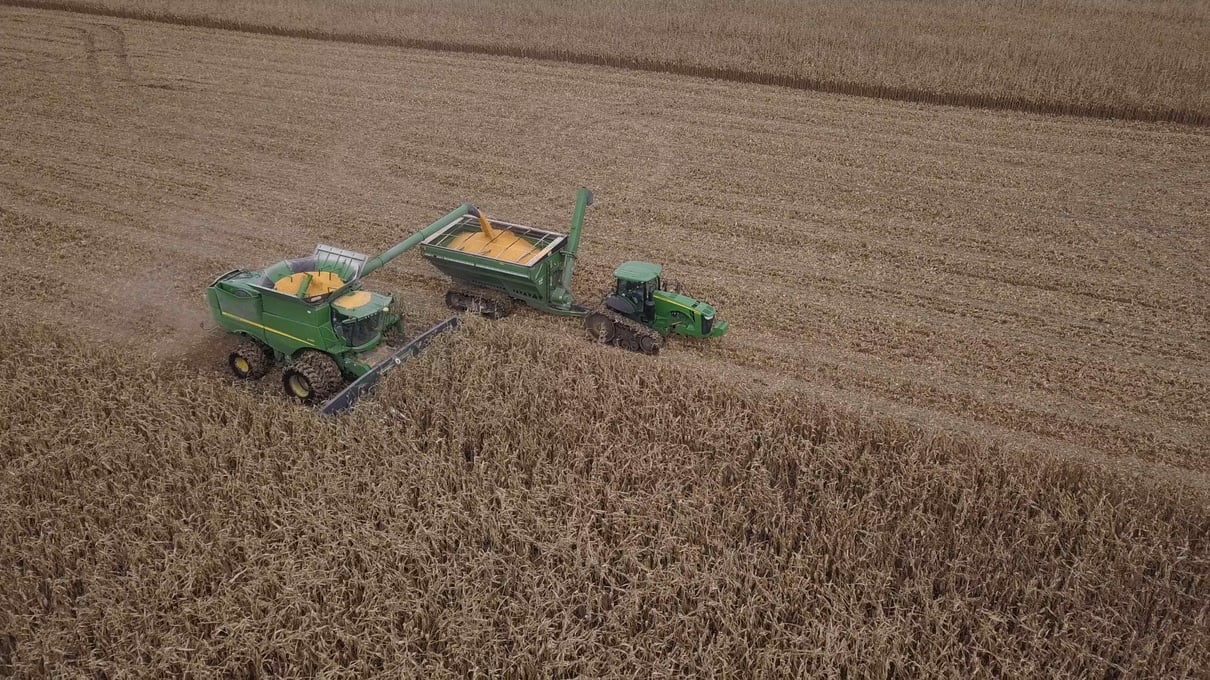
Planting with Pivot Bio PROVEN™ means more biomass in the field, and more nitrogen in the plant. In fields with visible differences between acres planted with Pivot Bio PROVEN and acres without, the crop was calculated to assimilate as much as 38 lb more nitrogen into above ground biomass.
The days are getting shorter and the corn fields are drying down in advance of harvest. In the south, combines are running hard. As these efficient machines separate the grain from the chaff, the yield monitor in the cab reveals the outcome of this year’s on-farm practice.
At Pivot Bio, we’re looking forward to seeing how our product is doing in farmers’ fields. Whether a farmer using Pivot Bio PROVEN™ chooses to reduce synthetic nitrogen application in the fall, skip a pass over the field in the spring, or otherwise tailor their nitrogen management program depends on the way our product interacts with their soil and their planting schedule. Every field that comes in tells us a little bit more about how our product is making a difference for farmers.
Nitrogen is such a complex input that it can be hard to pin down. Move 10 feet to the left or the right, and the soil (and nutrients available within) could be completely different. At Pivot Bio we started by focusing on making sure that nitrogen is present at the root. But we’re asking bigger questions now. The nitrogen available at the root is just one part of the equation. Increased size and health of the root system as a result of that consistent nitrogen means that the plant can access more nutrients and water throughout a bigger soil volume, multiplying the impact of biological nitrogen fixation.
Above ground biomass is one way to measure the total nitrogen available to the plant. In a survey conducted this year we zeroed in on fields that showed a visible difference between acres treated with Pivot Bio PROVEN™ and acres that used only synthetic nitrogen. In those fields, corn plants were bigger - nearly 20% bigger. When we worked with a third party to determine nitrogen content of these plants, we calculated that this increase in biomass translated to as much as 38 pounds of additional nitrogen incorporated by the plant.
I’ve worked with a lot of biological products, and I’ve never seen the sort of potential upside we see with Pivot Bio PROVEN™. Next year, we plan to run even more trial programs comparing Pivot Bio PROVEN™ on farm with and without microbes. We’ll also be expanding our university footprint with trials designed to give farmers recommendations that maximize their production practices.
This year has been incredibly challenging for farmers. From a wet spring, through a dry summer, to an inconsistent yield challenged by adverse economic conditions, farmers are searching for tools that will maximize productivity in an uncertain world. By introducing Pivot Bio PROVEN™ to their current on-farm practice, growers can add stability to their operation. The initial, promising, results from the 2019 harvest suggest that it could be a game-changer for farmers across the US.